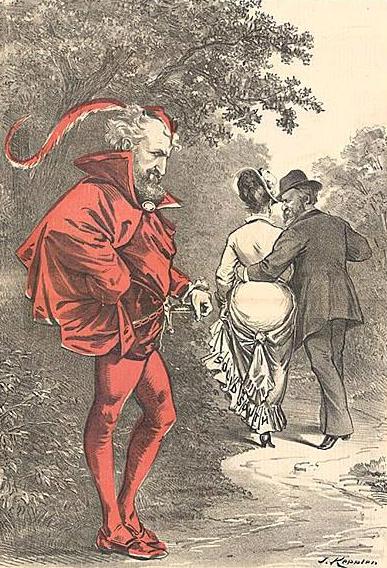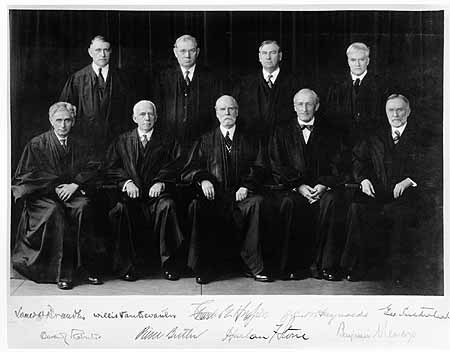steve_bank
Diabetic retinopathy and poor eyesight. Typos ...
Trump carried to an extreme leading to an armed assault on the capitol, but he is not really new.
The idea that there was a time in American when all was well polically and everybody made nice is a myth.

 www.smithsonianmag.com
www.smithsonianmag.com

 en.wikipedia.org
en.wikipedia.org

 en.wikipedia.org
en.wikipedia.org
Overturning RvW by SCOTUS historically is just brininess as usual.
I learned this in high school.

 en.wikipedia.org
en.wikipedia.org
The idea that there was a time in American when all was well polically and everybody made nice is a myth.

The Ugliest, Most Contentious Presidential Election Ever
Throughout the 1876 campaign, Tilden’s opposition had called him everything from a briber to a thief to a drunken syphilitic
But the ugliest, most contentious and most controversial presidential election in U.S. history was far from over. Throughout the campaign, Tilden’s opposition had called him everything from a briber to a thief to a drunken syphilitic. Suspicion of voter fraud in Republican-controlled states was rampant, and heavily armed and marauding white supremacist Democrats had canvassed the South, preventing countless blacks from voting. As a result, Florida, Louisiana and South Carolina were deemed too close to call, and with those states still in question, Tilden remained one electoral vote short of the 185 required by the Constitution to win election. With 165 electoral votes tallied for Hayes, all he needed to do was capture the combined 20 electoral votes from those three contested states, and he’d win the presidency. The ensuing crisis took months to unfold, beginning with threats of another civil war and ending with an informal, behind-the-scenes deal—the Compromise of 1877—that gave Hayes the presidency in exchange for the removal of federal troops from the South, effectively ending Reconstruction.

Compromise of 1877 - Wikipedia
The Compromise of 1877 was an unwritten deal, informally arranged among United States Congressmen, that settled the intensely disputed 1876 presidential election. It resulted in the United States federal government pulling the last troops out of the Southern United States, and ending the Reconstruction Era. Through the Compromise, Republican Rutherford B. Hayes was awarded the presidency over Democrat Samuel J. Tilden on the understanding that Hayes would remove the federal troops whose support was essential for the survival of Republican state governments in South Carolina, Florida and Louisiana. Hayes received 185 electoral votes to Tilden's 184 electoral votes. Despite losing the election, Tilden won the popular vote with 4,301,000 votes to 4,036,000 votes for Hayes.[1]
Under the compromise, Democrats who controlled the House of Representatives allowed the decision of the Electoral Commission to take effect.
The outgoing president, Republican Ulysses S. Grant, removed the soldiers from Florida, and as president, Hayes removed the remaining troops from South Carolina and Louisiana. As soon as the troops left, many white Republicans also left, and the "Redeemer" Democrats, who already dominated other state governments in the South, took control. The exact terms of the agreement are somewhat contested as the documentation is insufficient.[2]
Some black Republicans felt betrayed as they lost their power in the South that had been propped up by the federal military, and by 1905 most black people were effectively disenfranchised by the now-undemocratically elected state legislatures in every Southern state.[3]

Judicial Procedures Reform Bill of 1937 - Wikipedia
The Judicial Procedures Reform Bill of 1937,[1] frequently called the "court-packing plan",[2] was a legislative initiative proposed by U.S. President Franklin D. Roosevelt to add more justices to the U.S. Supreme Court in order to obtain favorable rulings regarding New Deal legislation that the Court had ruled unconstitutional.[3] The central provision of the bill would have granted the president power to appoint an additional justice to the U.S. Supreme Court, up to a maximum of six, for every member of the court over the age of 70 years.
the Judiciary Act of 1869, Congress had established that the Supreme Court would consist of the chief justice and eight associate justices. During Roosevelt's first term, the Supreme Court struck down several New Deal measures as being unconstitutional. Roosevelt sought to reverse this by changing the makeup of the court through the appointment of new additional justices who he hoped would rule that his legislative initiatives did not exceed the constitutional authority of the government. Since the U.S. Constitution does not define the Supreme Court's size, Roosevelt believed it was within the power of Congress to change it. Members of both parties viewed the legislation as an attempt to stack the court, and many Democrats, including Vice President John Nance Garner, opposed it.[4][5] The bill came to be known as Roosevelt's "court-packing plan", a phrase coined by Edward Rumely.[2]
Overturning RvW by SCOTUS historically is just brininess as usual.
I learned this in high school.

Teapot Dome scandal - Wikipedia
The Teapot Dome scandal was a bribery scandal involving the administration of United States President Warren G. Harding from 1921 to 1923. Secretary of the Interior Albert Bacon Fall had leased Navy petroleum reserves at Teapot Dome in Wyoming, as well as two locations in California, to private oil companies at low rates without competitive bidding.[1] The leases were the subject of a seminal investigation by Senator Thomas J. Walsh. Convicted of accepting bribes from the oil companies, Fall became the first presidential cabinet member to go to prison; no one was convicted of paying the bribes.
Before the Watergate scandal, Teapot Dome was regarded as the "greatest and most sensational scandal in the history of American politics".[2] It irrevocably damaged the reputation of the Harding administration, which was already severely diminished by its controversial handling of the Great Railroad Strike of 1922 and Harding's veto of the Bonus Bill in 1922.[3] Congress subsequently passed legislation, enduring to this day, giving subpoena power to the House and Senate for review of tax records of any U.S. citizen regardless of elected or appointed position.[4] These resulting laws are also considered to have empowered the role of Congress more generally.[5]
Last edited by a moderator:
